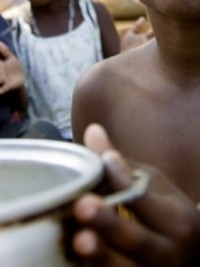|
||||||||||||||||||
|
|
Haiti - Agriculture : Food security perspectives until January 2021 24/09/2020 11:19:41
Below normal and irregular rains since the end of March have slowed down the continuation of agricultural activities and delayed the development of plantations in almost the whole country, except for certain irrigated areas in the South, North, North-East, West, Center and Artibonite. This has compromised the vegetative cycle of the season's crops, especially beans and corn. Most producing regions have not launched the spring season this year. Very poor spring harvests are a harbinger of below average summer/fall and winter campaigns, given their contribution to these successive seasons. Despite the above-average cumulative rains anticipated for this period, these seasons will yield below-average harvests. Preventive measures against the spread of the virus continue to negatively impact the functioning of markets in terms of income, transfers, and employment opportunities in the country. Added to this, the high prices of basic foodstuffs, in a context of the continued depreciation of the national currency against the dollar, and of below-average income, affect the food access of the poorest. Harvests in June/July, due to the anticipated drop in production, persistent inflation and the effects of Covid-19, will bring minimal improvement to the food security and accessibility of very poor households. Thus, food insecurity of Crisis (IPC Phase 3) and Stress (IPC Phase 2), for the most part, will continue during the projection period. This most likely scenario from June 2020 to January 2021 is based on the following assumptions : The period from June to September coincides, on the one hand, with the spring harvests which will have a limited impact on the acute food insecurity of poor and very poor households. The performance of this campaign will be 20-30% below average. Due to the poor performance of the main spring season, farmers will not have the adequate financial capacity to finance the summer season and even with good rainfall conditions the useful agricultural areas will be limited. The most affected areas are the dry areas deprived of an irrigation system. However, the harvests from the spring season will temporarily improve the food situation of poor households and somewhat stabilize market prices, especially in irrigated areas, where production prospects are average. Yet high commodity prices and below average incomes will continue to negatively affect household food access. Thus, the poorest will continue to resort to the aforementioned crisis strategies. In this context, most regions of the country would remain in Crisis (IPC Phase 3) and Food Stress (IPC Phase 2). The second scenario period (October 2020 to January 2021) coincides with the harvest period of the summer/fall campaign and the start of the winter campaign. There are beans and corn in the irrigated plains and in humid mountains, roots and tubers and bananas. This period also coincides with the harvests of seasonal crops such as Congo pea, strain peas and genoa. Despite the favorable agro-climatological conditions for these seasons, the losses resulting from the spring season will negatively affect the production of these seasons, which represent a low contribution to national agricultural production. Thus, household supply to markets will remain predominant. In addition, given the high availability of agricultural labor, income-generating activities will not be able to absorb the surplus observed since the border was closed as a result of the pandemic on both sides of the Haitian-Dominican border. The income of the poorest will still be below average. Under these conditions, the poorest households will continue to use adaptation strategies to meet their food needs. Thus, although a decrease in the number of food insecure households is possible, with the harvests from the summer/autumn campaigns and the resumption of economic activities as the end-of-year festivities approach, most of the areas of the country will once again be food insecure from Stress (IPC Phase 2) and Crisis (IPC Phase 3). HL/ HaitiLibre
|
|
|
Why HaitiLibre ? |
Contact us |
Français
Copyright © 2010 - 2024 Haitilibre.com |



